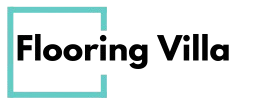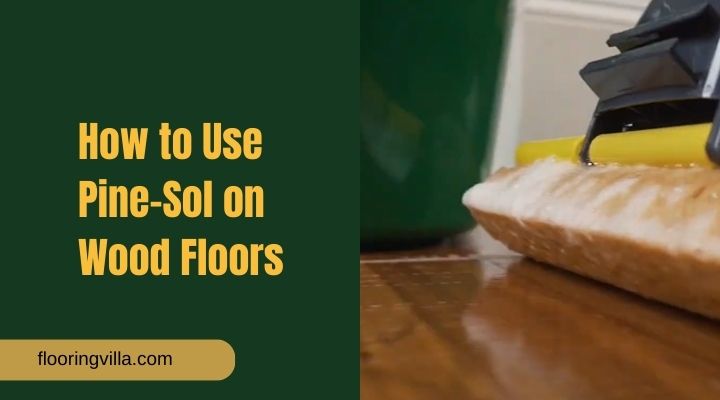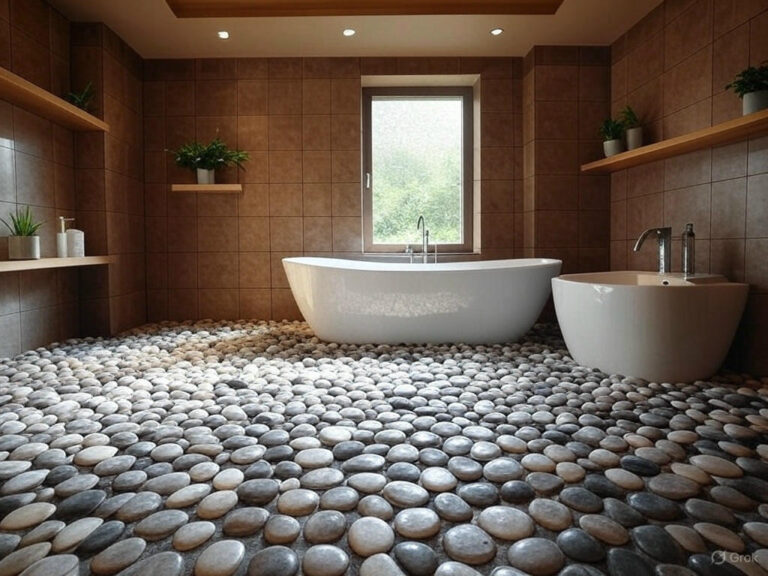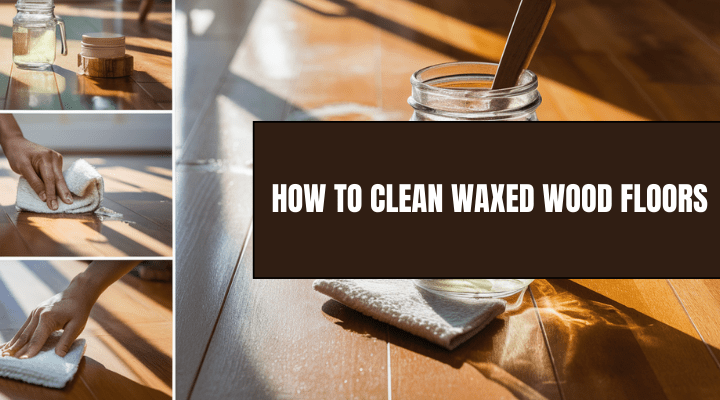How to Clean Linoleum Floors With Hydrogen Peroxide?
To clean linoleum floors with hydrogen peroxide, mix 1 cup of hydrogen peroxide with 1 gallon of water in a bucket. Use a mop or cloth to clean the floor with the solution.
Maintaining a clean and well-kept linoleum floor is essential to preserving its durability and appearance. Regularly cleaning with hydrogen peroxide is an effective method to remove stains, dirt, and grime without causing damage. This natural and non-toxic solution not only cleans the surface but also disinfects it, making it a safe and eco-friendly choice.
Understanding the proper technique for cleaning linoleum floors with hydrogen peroxide will ensure a lasting and appealing floor surface that enhances the overall aesthetic of your home or workspace.
Cleaning Linoleum Floors Safely
When it comes to maintaining the beauty and longevity of your linoleum floors, it’s essential to use safe and effective cleaning methods. Utilizing hydrogen peroxide is a great way to ensure your linoleum floors remain sparkling and free from germs and bacteria.
Importance Of Proper Cleaning Techniques
Proper cleaning techniques are crucial for preserving the integrity of your linoleum floors. Using harsh chemicals or incorrect cleaning methods can lead to discoloration, deterioration, and a shorter lifespan for your floors. Therefore, it is imperative to use safe and gentle cleaning solutions like hydrogen peroxide.
Hydrogen peroxide is a mild and non-toxic cleaning agent that provides excellent disinfecting properties without causing any harm to linoleum floors. Its antibacterial and antifungal properties make it an ideal choice for safely cleaning and maintaining your floors.
Here are the steps to safely clean linoleum floors using hydrogen peroxide:
- Mix a solution of water and hydrogen peroxide in a 1:1 ratio in a spray bottle.
- Spray the solution onto the floor surface and let it sit for a few minutes to loosen dirt and grime.
- Gently scrub the floor using a soft-bristled brush or mop.
- Rinse the floor thoroughly with clean water to remove any residue.
- Dry the floor with a clean, lint-free cloth to prevent water damage.
Ensuring Proper Application
It’s important to ensure that the hydrogen peroxide solution is used in the correct concentration and applied in a controlled manner to avoid overexposure to the floors. Additionally, testing the solution on a small, inconspicuous area of the floor is recommended to check for any adverse reactions before applying it to the entire surface.
By following these safe and effective cleaning techniques, you can maintain the beauty and hygiene of your linoleum floors without causing any damage.
Understanding Linoleum Floors
Laying linoleum flooring in your home not only gives it a clean, modern appearance but also offers a durable and low-maintenance surface. Understanding the unique properties of linoleum, common issues faced, and proper maintenance practices is crucial for keeping your floors in top condition.
Properties Of Linoleum
Linoleum is a resilient flooring material made primarily of linseed oil, pine rosin, wood flour, cork dust, and mineral fillers. This composition offers several key characteristics:
- Environmentally friendly: Linoleum is a sustainable flooring option due to its natural components and biodegradability.
- Durable: With proper care, linoleum floors can last for decades, resisting scratches and dents.
- Antimicrobial properties: The linseed oil content naturally prevents the growth of bacteria, making linoleum a hygienic flooring choice.
- Variety of colors and patterns: Linoleum is available in a wide range of designs, making it versatile for different interior styles.
Common Issues Faced
Despite its resilience, linoleum floors can face several common issues, including:
- Staining: Spills and tracked-in dirt can leave stubborn stains on the surface of linoleum.
- Fading: Exposure to sunlight over time can cause the colors of linoleum to fade, affecting its overall appearance.
- Wear and tear: Heavy foot traffic, especially in high-traffic areas, can lead to scuff marks and worn patches.
Proper Maintenance Practices
To maintain the beauty and longevity of your linoleum floors, it’s important to follow proper maintenance practices:
- Regular cleaning: Sweep or vacuum the floors frequently to remove dirt and debris that can cause scratches.
- Gentle washing: Use a mixture of hydrogen peroxide and water to clean the surface, as harsh chemicals may damage the linoleum.
- Avoid excess water: Limit the use of water during cleaning to prevent moisture from seeping into the seams and causing damage.
- Protective measures: Place doormats at entryways and use furniture pads to prevent scratches and scuffs.
Benefits Of Using Hydrogen Peroxide
Hydrogen peroxide is a versatile cleaning agent that offers several benefits when used to clean linoleum floors. From its effectiveness in killing germs to being environmentally safe, hydrogen peroxide provides an efficient and eco-friendly solution for maintaining the cleanliness of your floors. Additionally, it is known for its ability to remove tough stains, making it a valuable addition to your cleaning routine.
Effectiveness In Killing Germs
Hydrogen peroxide is a powerful disinfectant that effectively kills germs and bacteria on linoleum floors. Its bubbling action helps in lifting dirt and grime while disinfecting the surface. This makes it an excellent choice for households with pets and young children, ensuring a clean and sanitized living environment.
Safe For The Environment
Using hydrogen peroxide for cleaning linoleum floors is an environmentally friendly alternative. Unlike harsh chemical cleaners, hydrogen peroxide breaks down into water and oxygen, making it safe for the environment without leaving behind harmful residues, making it a sustainable and eco-conscious choice.
Removing Tough Stains
One of the standout benefits of hydrogen peroxide is its ability to remove tough stains from linoleum floors. Whether it’s stubborn food spills, pet stains, or beverage marks, hydrogen peroxide can effectively break down and lift the stains, restoring the original luster of your floors.
Diy Cleaning Solution With Hydrogen Peroxide
Linoleum floors are known for their durability and versatility, but they require regular maintenance to keep them looking their best. One effective way to clean and disinfect linoleum floors is by using a DIY cleaning solution with hydrogen peroxide. This natural and cost-effective solution can help remove stains, eliminate bacteria, and leave your linoleum floors sparkling clean.
Ingredients And Measurements
To create a DIY cleaning solution with hydrogen peroxide for your linoleum floors, you will need the following ingredients:
- Hydrogen peroxide: 1 cup
- Water: 1 gallon
- Essential oil (optional): a few drops for a pleasant fragrance
Step-by-step Cleaning Process
Follow these simple steps to clean your linoleum floors using the DIY cleaning solution with hydrogen peroxide:
- Prepare the Solution: In a bucket, mix 1 cup of hydrogen peroxide with 1 gallon of water. Add a few drops of essential oil for a pleasant scent if desired.
- Sweep the Floor: Use a broom or vacuum to remove any dirt, dust, or debris from the linoleum surface.
- Apply the Solution: Dip a mop into the prepared hydrogen peroxide solution and wring out the excess liquid. Then, use the damp mop to clean the entire floor surface, working in small sections at a time.
- Rinse and Dry: After mopping, rinse the floor with clean water to remove any remaining solution. Then, use a dry mop or towel to dry the floor thoroughly.
- Enjoy Your Clean Floors: Admire your freshly cleaned and disinfected linoleum floors, free from stains and grime.
Maintenance Tips For Long-lasting Results
Proper maintenance is essential for ensuring the longevity and beauty of your linoleum floors. Follow these tips to keep your floors looking clean and vibrant for years to come.
Regular Cleaning Schedule
Establish a regular cleaning schedule to remove dirt and grime from your linoleum floors. Sweep or vacuum the floors daily to eliminate loose debris. Mop the floors weekly using a solution of hydrogen peroxide and water to effectively clean and disinfect the surface.
Preventive Measures
Prevent scratches and damage by placing protective felt pads under furniture legs and using area rugs in high-traffic areas. Avoid exposure to direct sunlight as it can cause discoloration. Promptly clean up spills to prevent staining and damage to the linoleum.
Recommended Products And Tools
Invest in a high-quality microfiber mop to effectively clean linoleum floors without leaving streaks. Use hydrogen peroxide as a natural and safe alternative to harsh chemical cleaners. Additionally, consider using a pH-neutral floor cleaner specifically formulated for linoleum to maintain its longevity.
Related Queries:
How Does Hydrogen Peroxide Clean Linoleum Floors?
Hydrogen peroxide’s oxygen molecules break down dirt and stains on linoleum floors, providing a natural and effective cleaning solution.
Is Hydrogen Peroxide Safe To Use On Linoleum Floors?
Yes, hydrogen peroxide is safe for linoleum floors as it is a non-toxic and eco-friendly cleaning agent that effectively removes stains.
Can Hydrogen Peroxide Remove Tough Stains From Linoleum Floors?
Absolutely, hydrogen peroxide’s powerful oxidizing properties make it effective in lifting and removing tough stains from linoleum floors.
What Is The Best Way To Use Hydrogen Peroxide For Cleaning Linoleum Floors?
Mix hydrogen peroxide with water in a spray bottle, apply it to the linoleum floor, let it sit for a few minutes, then wipe clean for a fresh and sanitized surface.
Conclusion
Incorporating hydrogen peroxide into your linoleum floor cleaning routine can effectively remove tough stains and bacteria. By following the simple steps outlined in this blog post, you can achieve a sparkling clean floor without harsh chemicals. Harness the power of hydrogen peroxide to maintain the beauty and cleanliness of your linoleum floors with ease.








